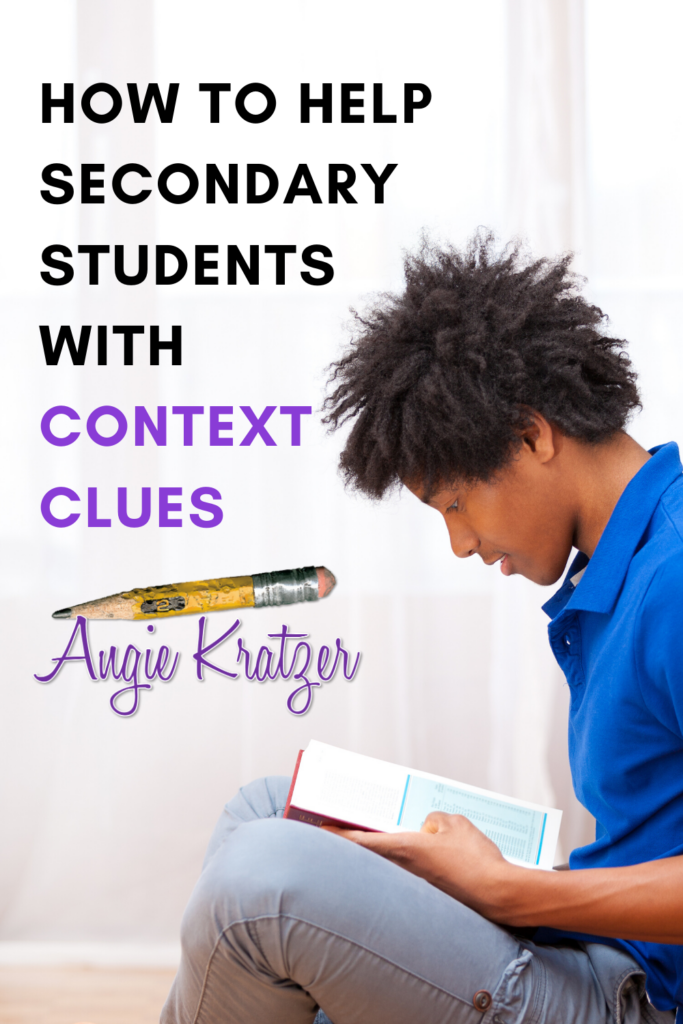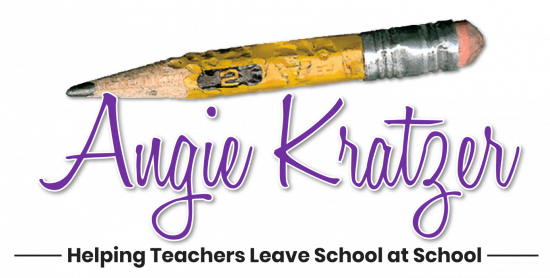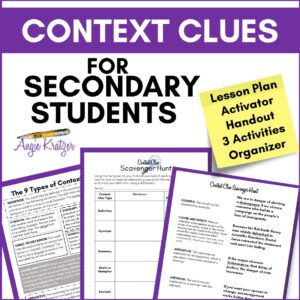
My third grader is a better reader than some of my high school students. He’s had a couple of strong reading teachers in school and gets support at home. (Pro Tip: He has to read me a chapter to get a half hour of screen. Magic.)
We’ve all had those students—the ones who are so far behind their peers that they can’t access the content we’re trying to teach. I’ve come to believe that it’s not too late, that an adolescent can become a good reader. One way to help make that happen is to go deep in the instruction of context clue strategies.
All the way through grade 12, American ELA standards hit specifically on context clues. Here’s how it looks across in just eighth grade within Common Core, TEKS, and VA SOL:
CCSS.ELA-Literacy.RI.8.4
Determine the meaning of words and phrases as they are used in a text. . .
CCSS.ELA-Literacy.RL.8.4
Determine the meaning of words and phrases as they are used in a text . . .
TEKS LA.8.2.B The student is expected to use context within or beyond a paragraph to clarify the meaning of unfamiliar or ambiguous words.
VA SOL R.8.4.b Use context, structure, and connotations to determine meaning and differentiate among multiple meanings of words and phrases.
Some standard wording includes the phrase “authentic texts.” Students need to learn about context clues from real-world pieces. The worksheet isolation just doesn’t cut it.
With secondary learners, I use the following process to teach context clues:
- As an activator, I give students a paragraph that includes nine nonsense words, all of which can be defined using context clues. I teach that there are nine types of clues, and students will use (without knowing it) each of the nine in defining the words. The thinking process they use is the segue to explain the types.
- The next bit includes some direct instruction of the nine types of context clues, and students get a paper or digital handout.
- For shared instruction, I write a sentence on the board and think aloud while students process with me what a definition might be based on context clues. I want them to hear how–as a good reader–I think through defining with context.
- For guided instruction, I put students in pairs and give each team a baggie containing eight slips of paper. (I have this same exercise on Google Slides if this lesson has to be remote.) Students pair the types with sentences that use those specific strategies.
- Here’s where the authentic part comes in. I distribute newspapers, magazines, textbooks, etc. that would contain words the students might not know. Few newspapers are written above a ninth grade level, so that’s worth considering. Magazine choices go a long way toward providing the rigor. For example, People might not work as well as The Atlantic. Students then conduct a scavenger hunt in which they find nine sentences that use the clues. THIS IS HARD, and you can see their brains smoking. This is where I differentiate; weaker readers may look for the clues being used with words they already know while stronger readers who still need some skill reinforcement look for sentences that use words they don’t already know.
- As a summary of the lesson, the class moves through a gallery walk of the sentences they found and completes a chart to keep them focused. They get to move and think at the same time.
I put all of this into a resource for teachers. Secondary Context Clues is now available on Teachers Pay Teachers and is provided in both PDF and Google Slides. A link to the slides is provided in the resource, and student pages include editable text boxes.


